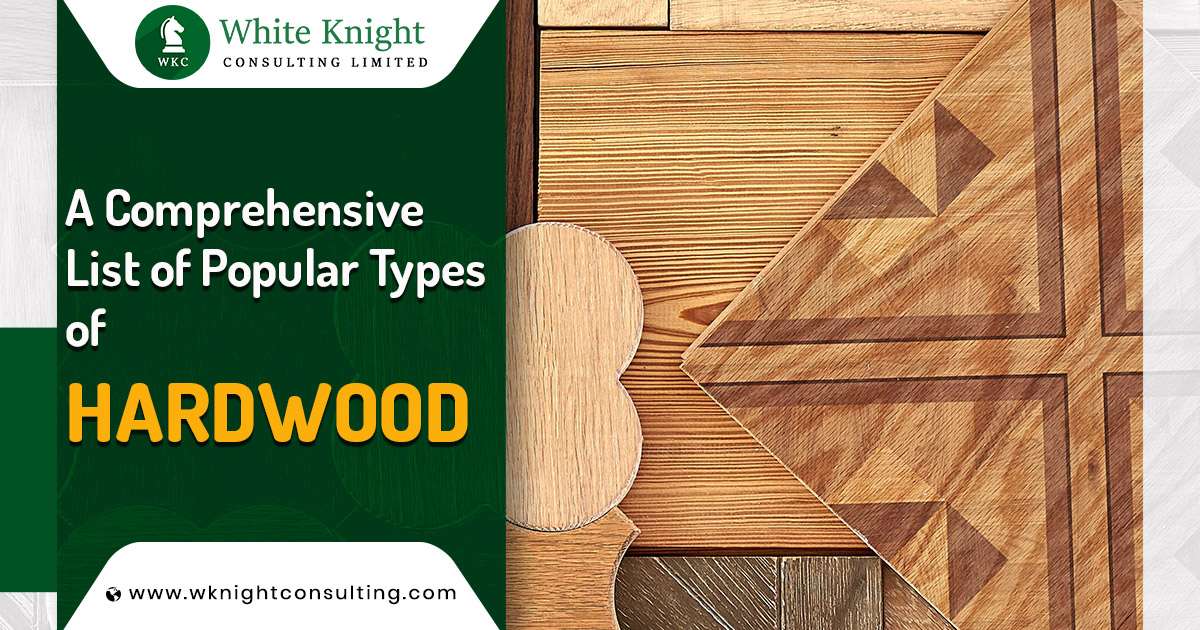With its unique properties, hardwood is a versatile material for building and design. Known for its strength, density, & durability, hardwood is commonly used in a variety of applications, including flooring, cabinetry, musical instruments, & more. Whether you’re a DIY enthusiast or a professional builder, hardwood is a top choice for any woodworking project.
What is Hardwood?
Hardwoods are sourced from deciduous trees that have broad leaves and lose their leaves every year. The trees tend to have a slow growth rate and can take multiple years to fully grow, which is why the wood produced from these trees is usually very hard and dense.
Exceptional hardwood properties make it a perfect choice for high-quality projects that require wood with excellent strength and durability.
Though hardwoods are generally hard, strong and durable, this isn’t always the case with all. For example balsa is rather soft, even softer than some softwoods.
Some of the most popular examples of hardwoods include teak, mahogany, sapele, and red iroko.
Because majority types of hardwood are generally high in demand, have a slow growth rate and longer drying period and are less commonly available than softwoods, they are typically more expensive than softwoods. More expensive hardwood species, such as fir, tend to be much more durable and/or attractive and their use is limited to premium projects or tasks that require great durability.
The uses of hardwood are extensive, ranging from regular construction and structural applications to crafting furniture, flooring, veneering, plywood, musical instruments, boat-building, & much more. Hardwood comes in many different types of wood, each with its own unique characteristics and qualities.
Hardwood items such as flooring and decking, made from durable woods like rosewood, will last longer because of their natural resistance to weather and insect attacks and require less maintenance than alternatives.
Unlike hardwood, softwood is more easily and extensively available all over the world and is generally preferred for projects where cost is a crucial factor. Because hardwoods are more expensive, they are usually selected for applications where natural durability and/or appearance are required. Softwood is obtained from coniferous trees, which have needles instead of leaves and produce cones instead of flowers. The bark of these trees is also different from hardwood trees, making it easier to distinguish between the two types of wood.
There are more than a hundred species or hardwood types.
Here, we will talk about some of the most common species of hardwood along with their properties such as appearance, durability, workability and strength.
Different Types of Hardwood & Their Properties
1. Meranti Wood
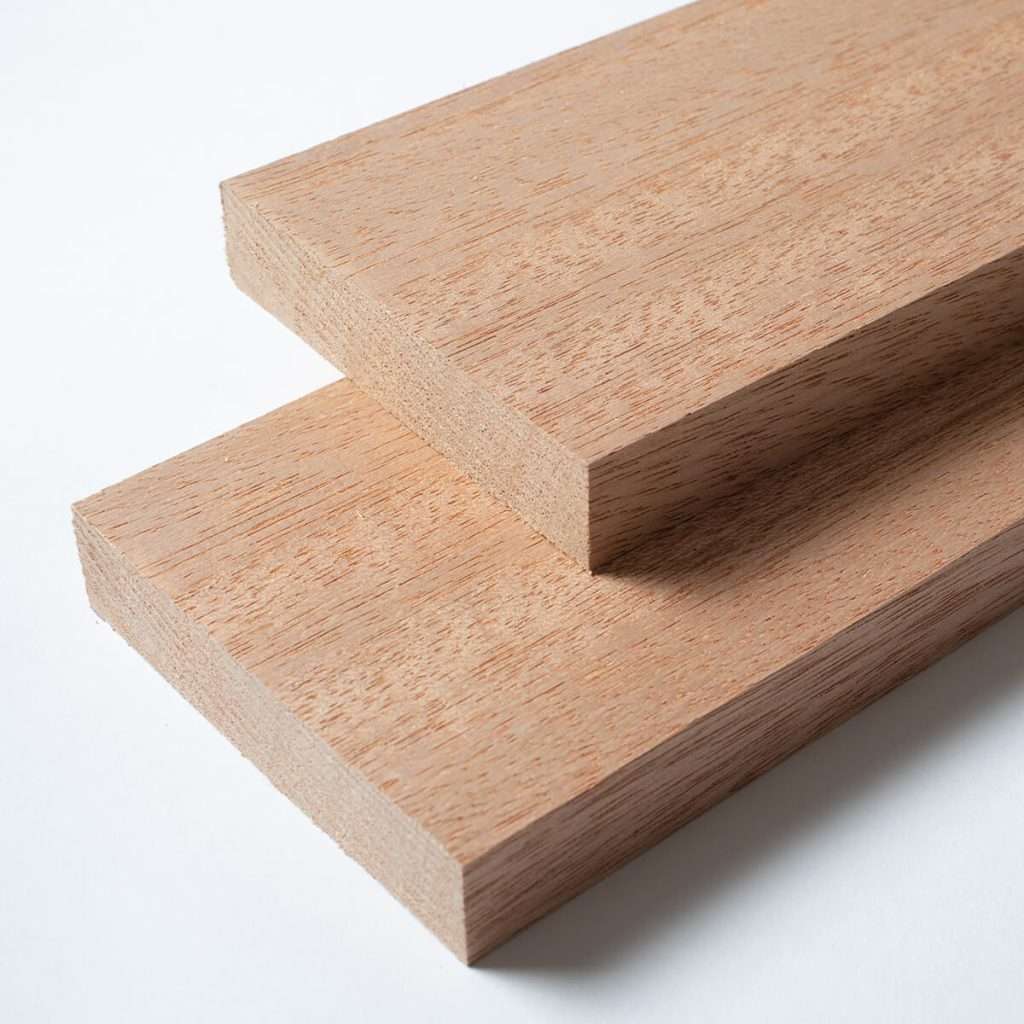
Red Meranti is also called Philippine Mahogany, though it has no relation to true mahogany. It shares similar features, including a dark reddish-brown appearance with white resin steaks. The grain is straight but can be interlocked also and the texture is coarse. Meranti is only moderately durable. It is easy to work with and is sometimes used in combination with other woods such as juglans nigra for furniture making.
Meranti hardwood is commonly used for plywood, furniture (interior), veneer, construction, boatbuilding, and wood flooring.
2. American White Oak Wood
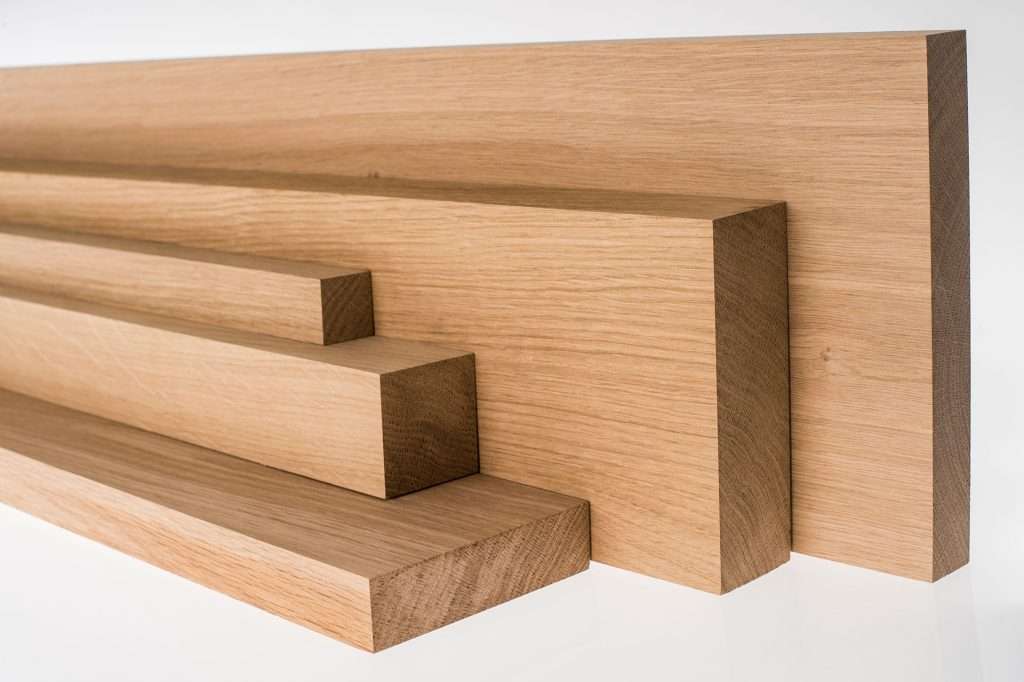
White Oak is exclusive to the eastern united states. It is hard (1,350 lbf Janka rating) and has an average dried weight of 47.0 lbs/ft3 (755 kg/m3). The oak heartwood is light to medium brown and the grain is straight with uneven texture. Oak is very durable in terms of resistance to decay and insects. It is also easy to work with.
The uses of oak include boatbuilding, flooring, furniture, cabinetry, barrels, veneer, and interior trim.
3. Sapele Wood
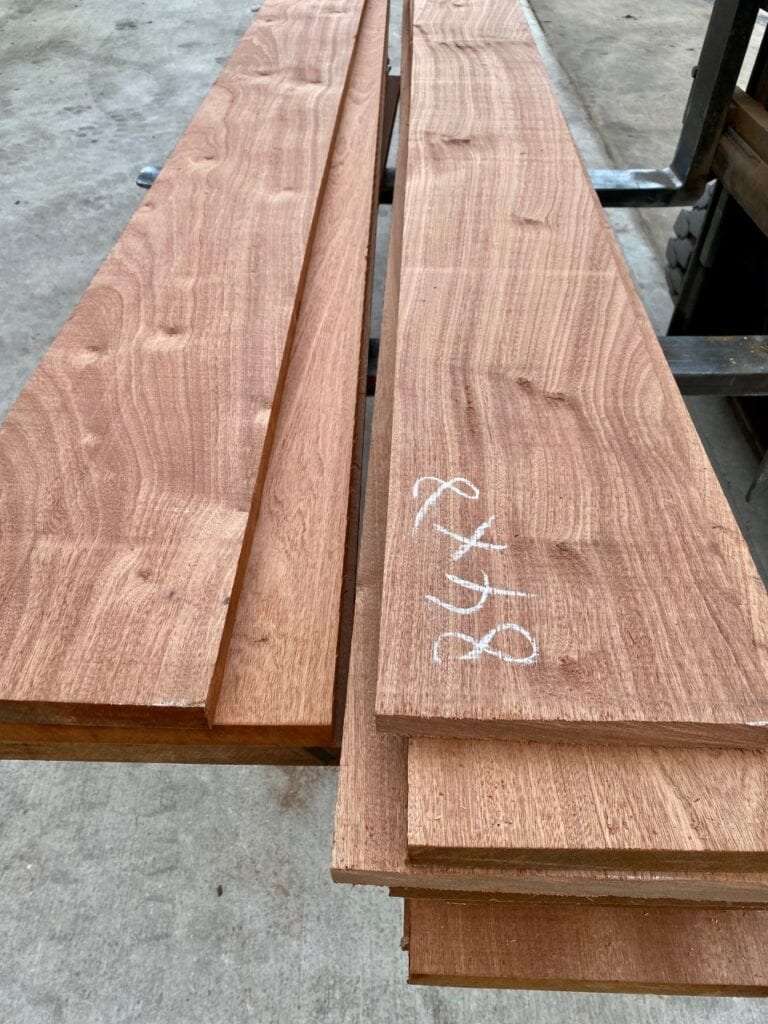
Sapele is a tropical African hardwood with a 1,410 lbf (6,280 N) hardness rating. It is a golden to dark brown coloured wood with an interlocked grain and a fine uniform texture. Sapele is considered very durable in terms of decay resistance and can be difficult to work with due to its high density.
Figured Sapele are quite popular but very expensive. Common uses include plywood, musical instruments, veneer, furniture, boatbuilding, turned objects, cabinetry, and flooring.
4. Ash Wood
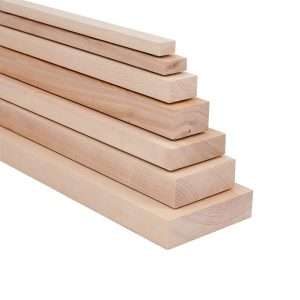
Ash wood has many varieties. European Ash is light to medium brown and sometimes has dark streaks. The texture is medium and coarse and the grain is straight. This type of ash is moderately durable and is poorly resistant to insect attack. It is easy to use though.
Ash has a Janka rating of 1,480 lbf (6,580 N). It is used for flooring, boxes, crates, millwork, and turned objects such as baseball bats.
5. European Oak Wood
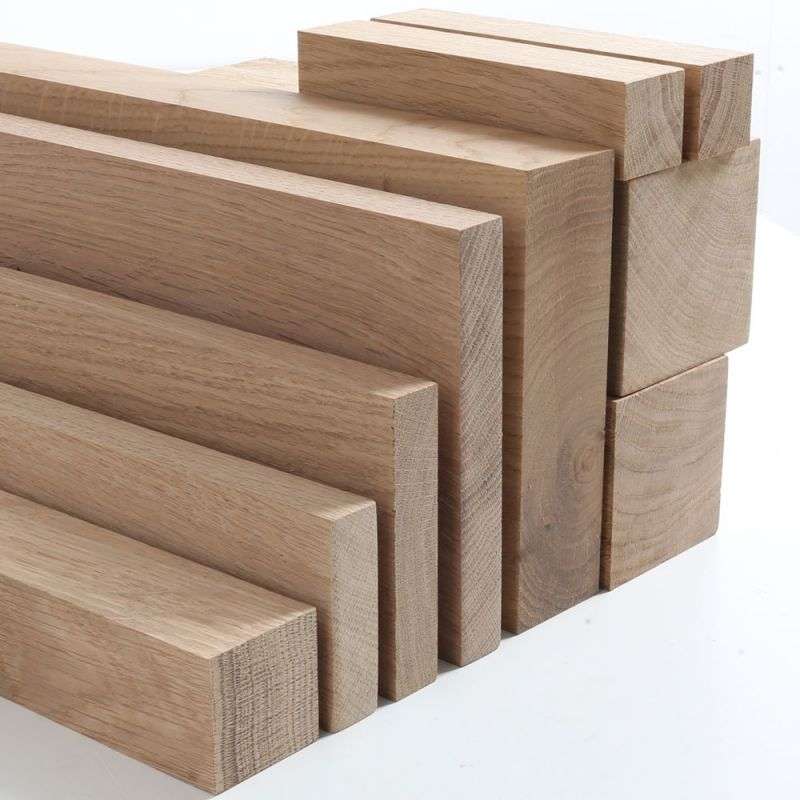
European Oak, also called English oak, is strong and has good resistance to decay. It has a 1,120 lbf (4,980 N) Janka rating and a 42 lbs/ft3 (675 kg/m3) average dried weight. The oak heartwood is light-medium brown and the sapwood is light brown or white. The wood grain is straight and the texture is coarse and uneven. Oak is easy to work with.
Oak is used for boatbuilding because of its resistance to decay. Other uses include cabinetry, interior trim, barrels, furniture, flooring, and veneer.
6. Maple Wood
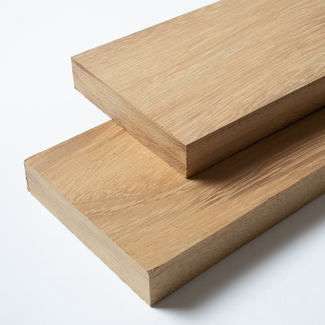
Hard maple is also called sugar maple, It is a non-durable wood despite its hardness (1,450 lbf Janka rating). The average dried weight is 44.0 lbs/ft3 (705 kg/m3). The heartwood of maple is so soft and perishable that sapwood is most commonly used, which is nearly white or off-white. The grain is straight and maple is fairly easy to work with.
Maple is primarily used for making flooring and also for veneer, paper pulp, cutting boards, baseball bats, musical instruments, workbenches, and specialty items.
7. Beech Wood
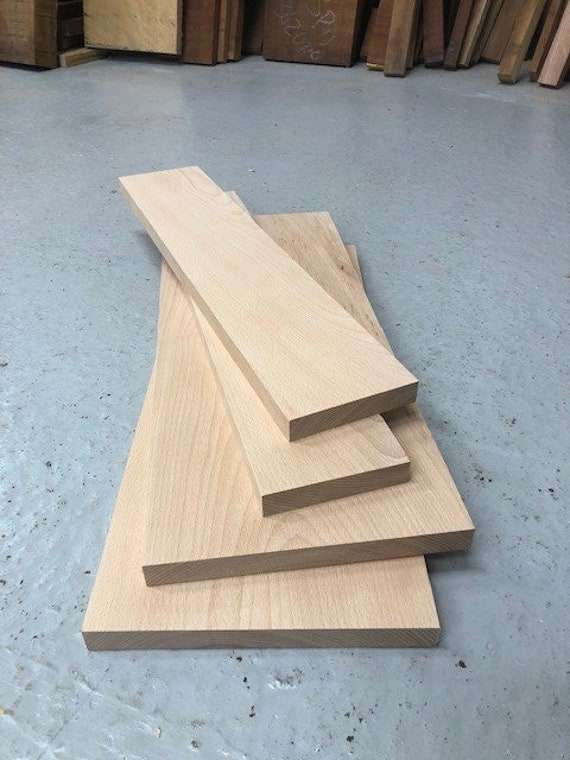
Beech is a hardwood having a Janka rating of 1,450 lbf (6,460 N) and an average dried weight of 44.3 lbs/ft3 (710 kg/m3). The heartwood is pale straw-coloured. The grain is straight and the texture is fine to uniform. Beech is non-durable with poor resistance to insect attack. It is easy to work with.
European Beech is easily and widely available at a low price. It is used for veneer, flooring, furniture, musical instruments, lumber, boatbuilding, cabinetry, plywood, and turned objects.
8. Teak Wood
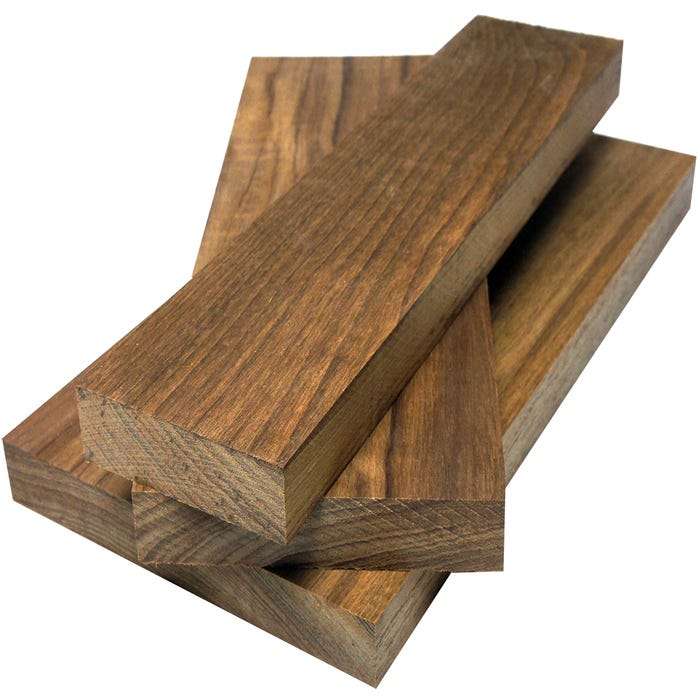
Teak, one of the most popular types of hardwood is native to Southern Asia but is also grown on plantations across tropical regions of Latin America and Africa. The trees are about 100-130 ft (30-40 m) tall and have a 3-5 ft (1-1.5 m) trunk diameter. The average dried weight of Teak is 40.9 lbs/ft3 (655 kg/m3) and has a Janka (hardness) rating of 1,070 lbf (4,740 N).
Teak has a golden or medium brown heartwood that may darken with age. The wood grain is usually straight and the texture is coarse and uneven. Teak is extremely durable and has excellent resistance to decay, termites and a range of insect attacks. It is also generally easy to work with.
Teak is easily available but is very expensive due to high demand. It is used in everything from exterior construction and furniture to veneer, plywood, ship and boatbuilding, carving, flooring, and wooden objects.
How Different Types of Hardwoods Excel in Various Applications?
Hardwood is suitable for almost all types of applications where softwood is used, but it comes at an expensive price and some species may not be as easily available. The benefit of using hardwoods over softwoods is that they can offer greater strength and durability to a project and are perfect for exterior applications.
They are commonly used in high-end projects and to build premium-quality furniture that lasts long. It is also used for exterior applications such as decking, boatbuilding, flooring, and others because of its durability and high strength.
Top uses of hardwood include:
- Construction – structure for buildings, high-quality furniture, etc.
- Boatbuilding and ships
- Flooring
- Cladding
- Fencing
- Decking
Some species of hardwood are also used in genre-specific applications such as sports equipment, musical instruments like guitars, walking sticks, and specialty wooden items.
If you are looking to buy top-quality, sustainable hardwood timber or need help choosing the right wood type for your project, contact White Knight Consulting Ltd, a premier, UK-based timber company engaged in manufacturing, exporting and wholesaling different types of hardwood products in the UK and neighbouring countries.
